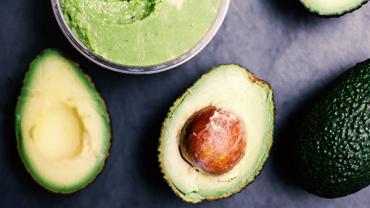
It’s hard to pick up a publication these days—whether it’s a medical journal or a popular magazine—and not see an article about ketogenic diets. People are flocking to this very low-carb, high-fat way of eating for a wide range of goals, including weight loss, better blood sugar, boosting athletic performance, managing epilepsy, and more. With this in mind, let’s take a closer look at what exactly nutritional ketosis is.
Origins of the Ketogenic Diet
The ketogenic diet (KD) was originally developed in the 1920s as a treatment for intractable epilepsy. It was intended to mimic some of the beneficial effects observed during fasting, because fasting had been known since ancient times to reduce seizures. For decades, this was the only application of the KD. It’s only recently that it’s being explored for numerous other purposes, but we can go back at least as far as 1972 and give Dr. Robert Atkins credit for bringing the benefits of the KD to the public, even if he didn’t call it that. Low-carb diets are also called “Banting” in the UK and South Africa, after William Banting, a British man whose “Letter on Corpulence” in the 1860s introduced the public to a weight loss regimen that was low in sugar and starch, but not what we would classify as ketogenic today.
Controversy and debate rage online over the definition of ketosis, but two of the most prominent KD researchers, Stephen Phinney, MD, PhD, and Jeff Volek, PhD, RD, put the range for nutritional ketosis at a blood beta-hydroxybutyrate (βOHB) level of 0.5-5.0 mmol/L. Contrast this with levels of ketosis consistent with other physiologic situations:
|
Ketone Levels Produced Endogenously in Physiological States |
|
|
Metabolic State |
Blood ketones (βOHB, mmol/L) |
|
≤ 0.1 |
|
|
<0.5 |
|
|
0.5-5.0 |
|
|
2.0-7.0 |
|
|
5.0-8.0 |
|
|
15-25 |
|
It’s crucial to distinguish between these conditions, because confusion between safe, benign nutritional ketosis and diabetic ketoacidosis has been a factor in hindering more widespread acceptance of ketogenic diets and other ketogenic interventions (e.g., use of exogenous ketone salts and esters) as viable therapies among the medical and dietetics professions.
Dietarily induced ketosis is quite different from pathological and dangerous diabetic ketoacidosis (DKA). DKA occurs in mismanaged type 1 diabetes or late-stage type 2 diabetes involving beta-cell “burnout,” when there is insufficient insulin to counteract rising ketone production. In these cases, endogenous ketone synthesis reaches dangerously high levels, resulting in lowered blood pH causing acidosis that overwhelms the body’s natural buffering systems. In nutritional ketosis, however, the blood ketone concentration stays within a safe range and there are no adverse effects on blood pH. As shown above, during nutritional ketosis and medically therapeutic ketosis, ketone levels do not approach those of diabetic ketoacidosis—nor, for that matter, does total starvation in a well-regulated, healthy body.
Just because they both have “keto” in their names doesn’t mean ketosis and ketoacidosis are the same things. As Phinney and Volek wrote, “Suggesting these two states are similar is like equating a gentle rain with a flood because they both involve water.” The water analogy is an illustrative one: the difference between benign dietary ketosis and diabetic ketoacidosis is the difference between a gentle spring shower and a catastrophic tidal wave or monsoon.
What is Ketosis?
At its heart, ketosis is the state of burning fat. Ketosis induced via a very low carbohydrate intake occurs because in the absence of appreciable carbohydrate, insulin levels decrease and remain generally low, facilitating lipolysis, the breakdown of fat. We typically think of insulin as a “blood sugar hormone,” but one of its most important—yet highly underappreciated—roles is in inhibiting lipolysis. Insulin suppresses hormone-sensitive lipase (HSL), a hormone critical for lipolysis, or hydrolyzing triglycerides—a.k.a., breaking down fat. When insulin levels are lower, lipolysis may proceed more easily.
Ketone bodies result from the incomplete oxidation of fatty acids. Under certain circumstances, rather than condensing with oxaloacetate (OAA) and entering the Krebs cycle, acetyl-CoA is shunted toward ketogenesis. (First as acetoacetate, then to beta-hydroxybutyrate or acetone. Acetoacetate is the ketone commonly measured in urine; beta-hydroxybutyrate is measured with home blood ketone meters, and acetone can be measured in breath.) Ketone bodies can also be elevated via ingesting exogenous ketones, coconut oil, or medium-chain-triglyceride (MCT) oil, the latter two of which are high in (or exclusively contain) medium-chain fatty acids, which are digested differently from other fats and are more easily metabolized into ketones. The majority of ketogenesis occurs in the liver, but the liver does not use ketones; rather, it exports them for use in other tissues, most notably the brain, skeletal muscle, and cardiac muscle.
The human body is no stranger to ketones. A biochemistry textbook couldn’t have said it any more clearly: “Many tissues prefer to use fatty acids and ketone bodies as oxidizable fuels in place of glucose. Most such tissues can use glucose but prefer to oxidize fatty acids and ketone bodies.” (Emphasis added.) Alzheimer’s researcher Sam Henderson, PhD, posited an interesting idea: “Throughout much of human evolution, ketosis likely served as a valuable survival mechanism to fuel brain metabolism during times of food scarcity. Hence, in some ways, the modern diet can be considered ‘keto-deficient.’” (Emphasis added.) A future blog post will explore therapeutic applications of the ketogenic diet, including those with scientifically proven track records, as well as new frontiers for research.